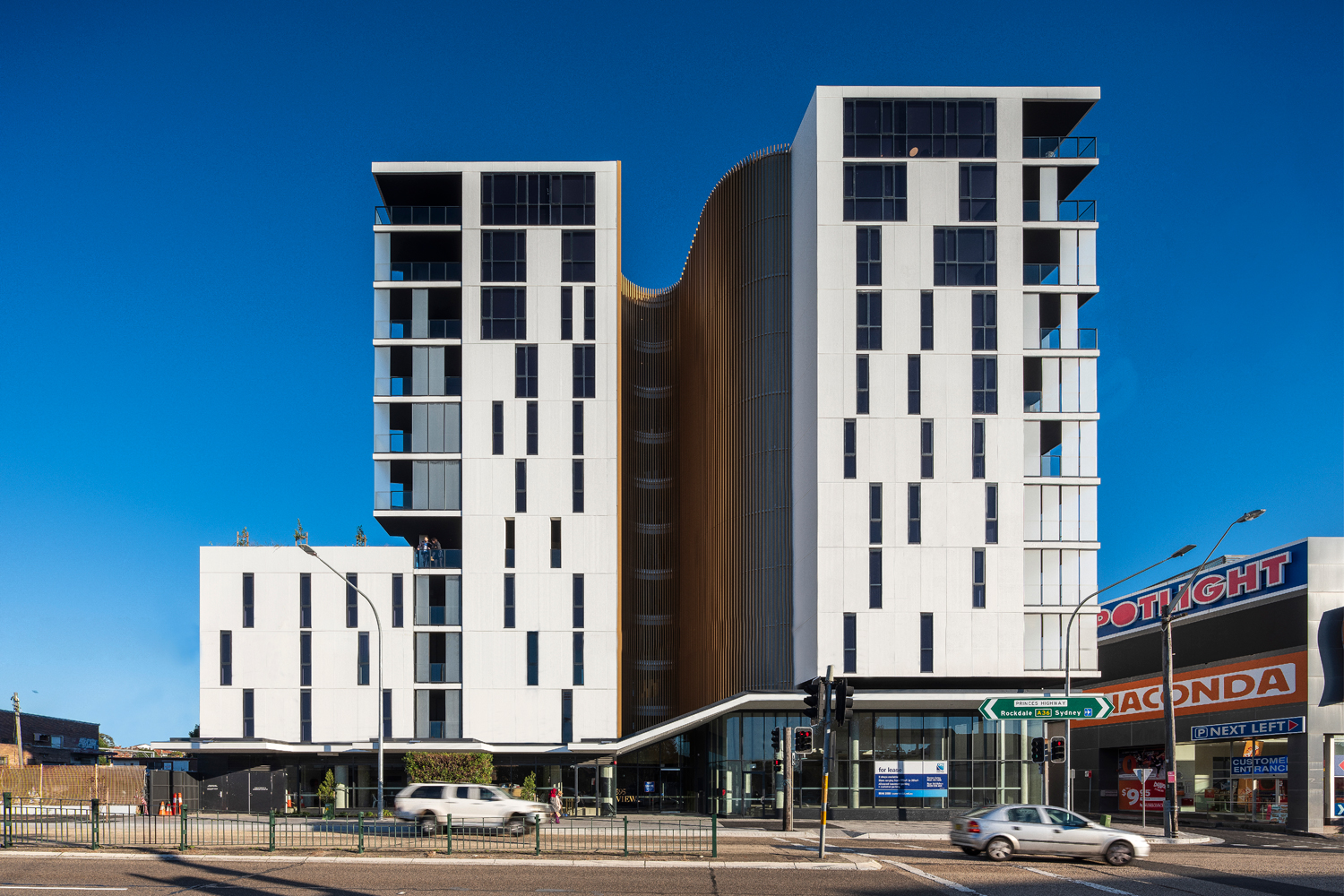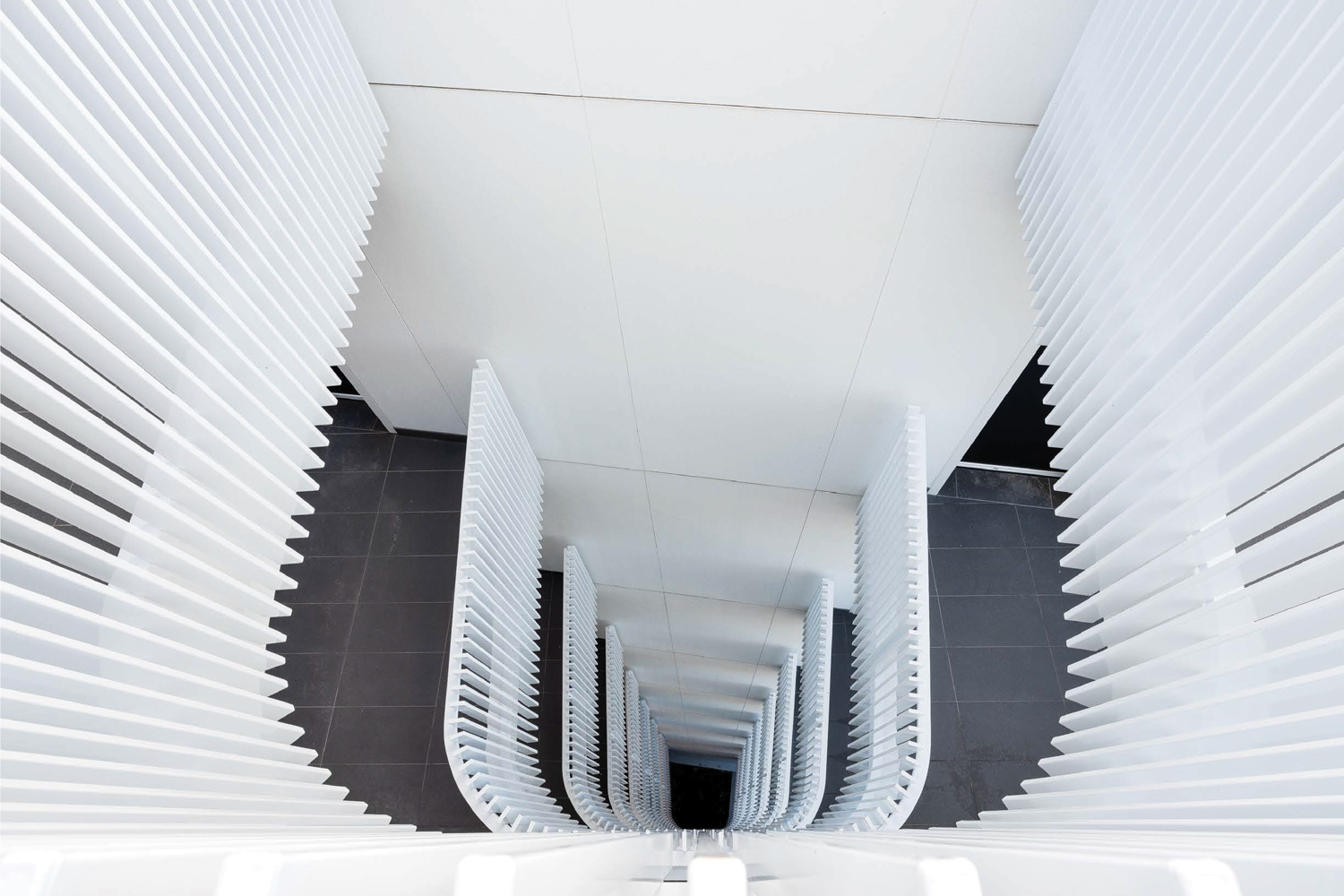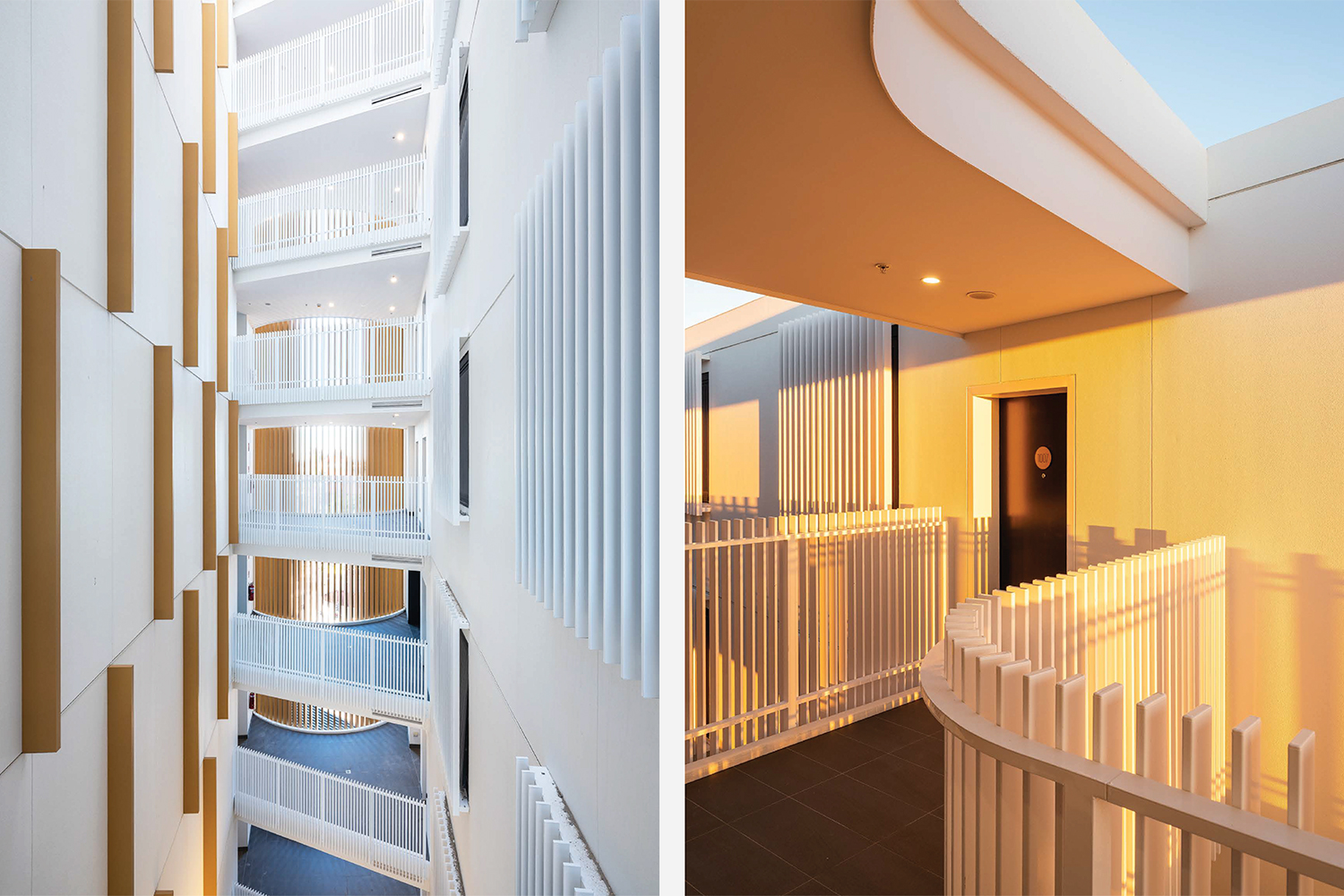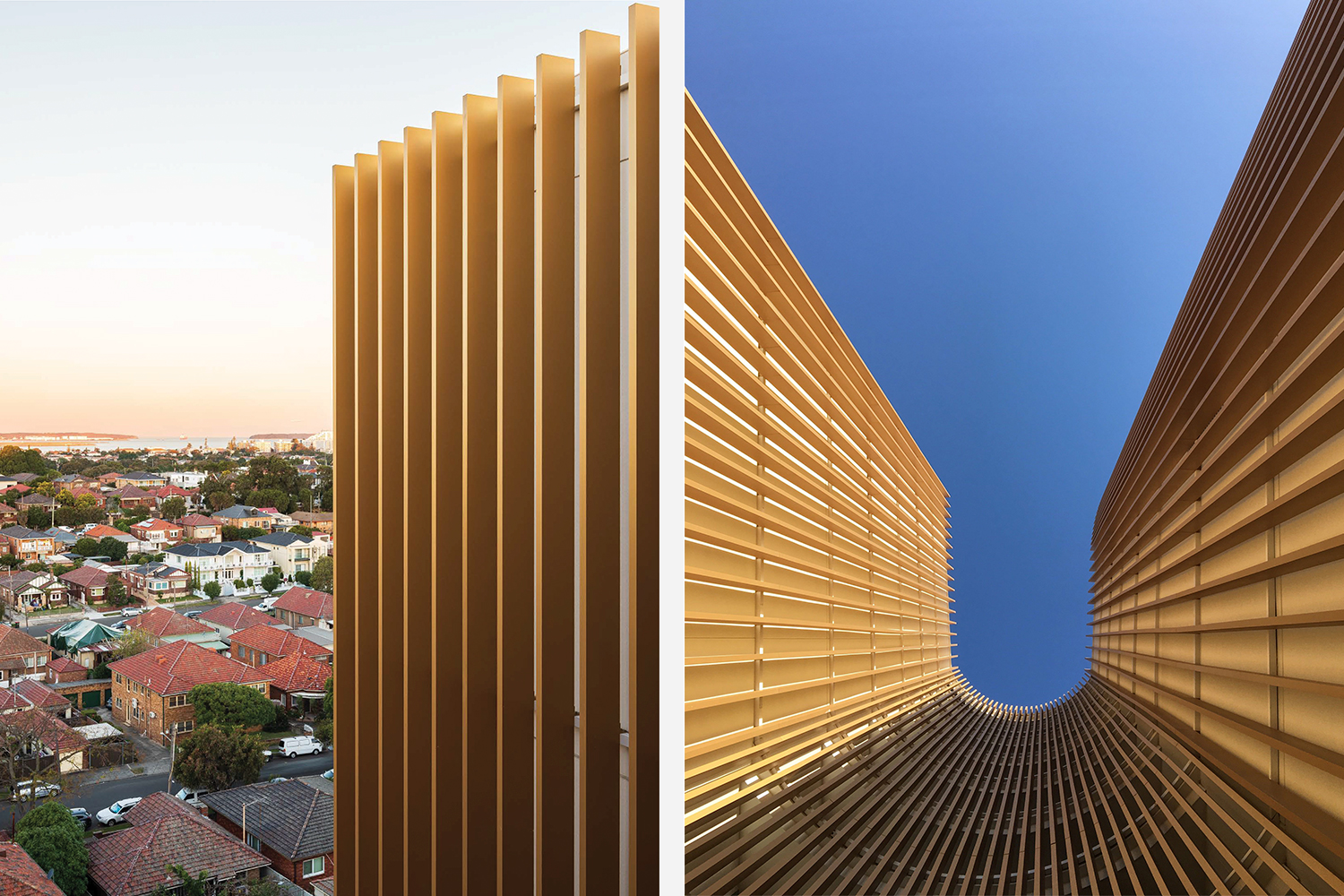VIEW
Fuse Architects
Australia
VIEW was conceived through a design excellence competition for a mixed-use tower within the Rockdale Town Centre in Sydney’s southern suburbs. It aimed to encapsulate and extend the vibrant character of the existing low-scale stock and present, in an iconic form, the ambitions of its future character. The development was to serve as a catalyst for the redevelopment of Rockdale’s southern industrial edge.
As a studio, Fuse Architects sought to explore the latent potential for innovation in multiple-dwelling housing, to provide homes that were economically, environmentally and socially sustainable, and provide an appropriate gateway building into an aspirational town centre. The result is an elegant 11-storey two-tower form that provides 91 high-quality residential apartments, and 615 square metres of active ground-floor retail.
At heart of the development is an open breezeway, which compositionally unites the towers while providing residents of the building new social opportunities and passively reducing both their and the building’s overall environmental impact. The central breezeway maximised the number of units oriented towards the sun and away from the existing noise pollution from the highway and railway.
VIEW provides the maximum apartment yield with the most efficient use of the site. The efficient use of materials and detailing reduced construction and purchase costs – and will reduce the cost of living for future residents. Economic sustainability is reinforced through service integration, collecting rainwater, utilising high-efficiency centralised hot water and bulk-buying power. A broad variety of apartment types cater to diverse user groups and family types, and consideration has been given to individuals living with a disability.
VIEW strives for excellence in both performance and aesthetics. Where neighbouring developments compromise design aesthetic and quality of living for financial advantage, VIEW achieves an equilibrium of style, resident wellbeing, sustainability and economic conservation.
Photography: Tom Ferguson




